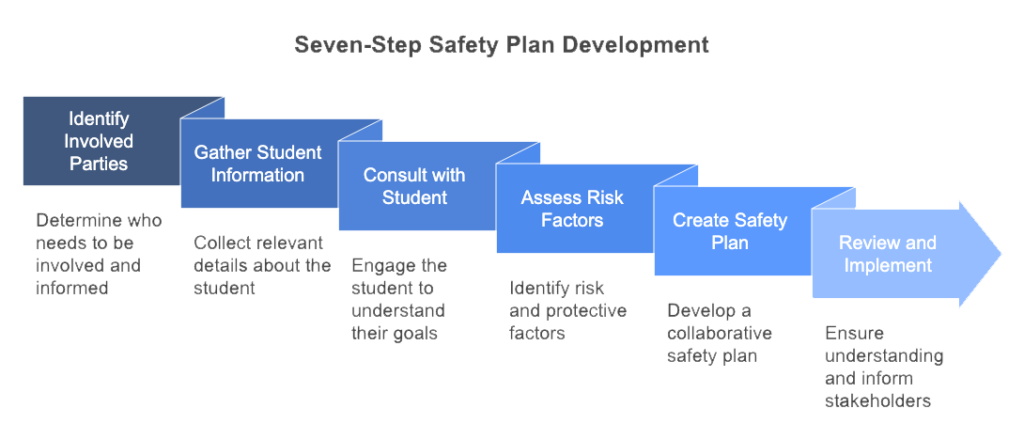
April is Sexual Assault Awareness Month, a time for mental health professionals to enhance their understanding of sexual violence while supporting prevention efforts in various settings. Educational institutions in particular have a unique opportunity to leverage this awareness by implementing evidence-based training programs addressing consent, bystander intervention, and trauma-informed responses. By engaging campus communities in conversations about healthy relationships and making relevant resources available, colleges and universities create environments where students and staff recognize warning signs of potential harm and know how to access support services when needed—ultimately contributing to safer communities where respect and protection are prioritized.
Addressing Problematic Sexual Behaviors on Campus
For decades, colleges and universities have worked to improve their response to sexual assault on campus and have made significant progress in supporting those who have experienced sexual violence. In a 2021 webinar, prevention expert Joan Tabachnick reflects on this evolving landscape, noting that historically many institutions avoided acknowledging sexual assault on campus altogether.
Today, however, nearly every college offers some form of support services for those impacted by sexual violence, such as individual and group counseling, crisis hotlines, and student advocacy groups. However, many institutions still struggle to deal effectively with students who have caused sexual harm.
“We’ve made tremendous progress in developing survivor services, but a new and emerging area of concern for campuses is what to do about the students who cause the harm.”
According to Tabachnick, sexual misconduct exists on a spectrum. In fact, if we expand our understanding of sexual abuse beyond violent and illegal acts to include harassment and harmful bullying, the prevalence of this abuse becomes more apparent. One recent study indicated that approximately 70% of college females have reported such types of harassment.
How we frame sexual harm significantly influences our approach to addressing it. Tabachnick illustrates this with a thoughtful example: the term “college rapist” creates a vastly different mental image than “a student who has caused sexual harm.” These distinctions aren’t merely academic—they shape our decisions regarding appropriate treatment. She found that when clients realize that they are not the sum total of their worst behaviors, they are able to start making progress. As Tabachnick puts it, “The words we use matter. They affect how we think about both the problem and the solution.”
Building on this concern, Tabachnick highlights a persistent gap: many campuses remain unsure about how to work with students who have been accused of or found responsible for sexual misconduct. Recognizing this challenge, Tabachnick developed a unique guide in partnership with Victim Rights Law Center that provides specific instructions on how staff can work with individuals who have sexually harmed by creating safety plans. Such plans are often used for victims of sexual assault, but this guide, titled, Safety Planning: For Students Responsible for Sexual Misconduct on Campus, addresses the need to create such plans for those students who are at risk of causing harm.
Safey Plans for Students Responsible for Sexual Misconduct on Campus
Safety planning offers a proactive and compassionate path forward for campuses seeking to move beyond punitive approaches and foster genuine accountability. Rather than isolating or excluding students who have caused harm, this approach recognizes the potential for positive change—especially among those willing to take responsibility for their actions.
A safety plan is a voluntary agreement that can be used with students who ask for help before they engage in harmful behavior. Tabachnik describes the philosophy behind a safety plan:
At the core of Safety Planning for responsible students is the value that a student who remains connected to their community will have a vested interest in not causing harm to that community. A Safety Plan is not a guarantee, but it helps to ensure that the student has as many protective factors as possible to prevent concerning behavior (or perceived concerning behavior) in the future. – from Safety Planning: For Students Responsible for Sexual Misconduct on Campus
The guide lays out a seven-step framework that campus staff can adopt in their work. The framework is briefly as follows:

- Identify Who Should Be Involved: Determine necessary personnel, resources, and inter-departmental collaborations.
- Gather Student Information: Collect relevant background, enrollment status, mental health needs, and conduct history.
- Consult the Student: Engage them in the process, understand their goals, and explain confidentiality limits.
- Assess Risk and Protective Factors: Identify research-based risk factors and personal strengths, involving clinicians for higher-risk cases.
- Develop the Plan: Collaboratively establish clear boundaries, consequences, and necessary resources.
- Review and Implement: Ensure understanding among the student, support people, and key campus stakeholders.
- Monitor and Evaluate: Conduct regular check-ins to assess adherence and make adjustments as needed.

The guide shows staff how to utilize the Risk-Needs-Responsivity (RNR) principles to create effective safety plans. The RNR model matches intervention intensity to risk level, addresses specific factors linked to reoffending, and adapts services to each student’s preferred learning style, culture, and mental health background. By considering these elements alongside protective factors, campus professionals can develop individualized plans that better support campus safety.
Accountability and Healing on Campus
In Tabachnick’s interview with Safer Society, she concluded by sharing a quote from Tarana Burke, activist and founder of the #MeToo movement:
“We can’t move to a culture that eliminates sexual violence if we’re not dealing with how harm-doers become harm-doers and how they undo that. Leaving them in a heap on the side of the road is not the answer; allowing them to sneak back in through the back door […] and acting like nothing happened [is not] the answer. There should be an expectation that there’s real rehabilitation and that [those who have offended] have seen the light and want to make dramatic shifts in their behavior.” – Tarana Burke, NPR Interview
By embracing both prevention and accountability, educational institutions can create environments where respect, safety, and growth are prioritized for everyone. This holistic approach, especially during Sexual Assault Awareness Month, reminds us that lasting cultural change is possible when we commit to supporting all members of our campus communities—empowering survivors, addressing harmful behaviors, and building safer futures together.
Resources:
- Webinar Interview with Joan Tabachnick and Jay Wilgus: Campus Dilemma: Unique Challenges of Addressing Problematic Sexual Behavior in Students
- University students’ experiences of sexual harassment: the role of gender and psychological resilience
- STARRSA Active Psychoeducation (AP) Manual
For further reading on campus sexual misconduct prevention, we recommend reviewing research from the National Sexual Violence Resource Center and the Association for the Treatment & Prevention of Sexual Abuse.
